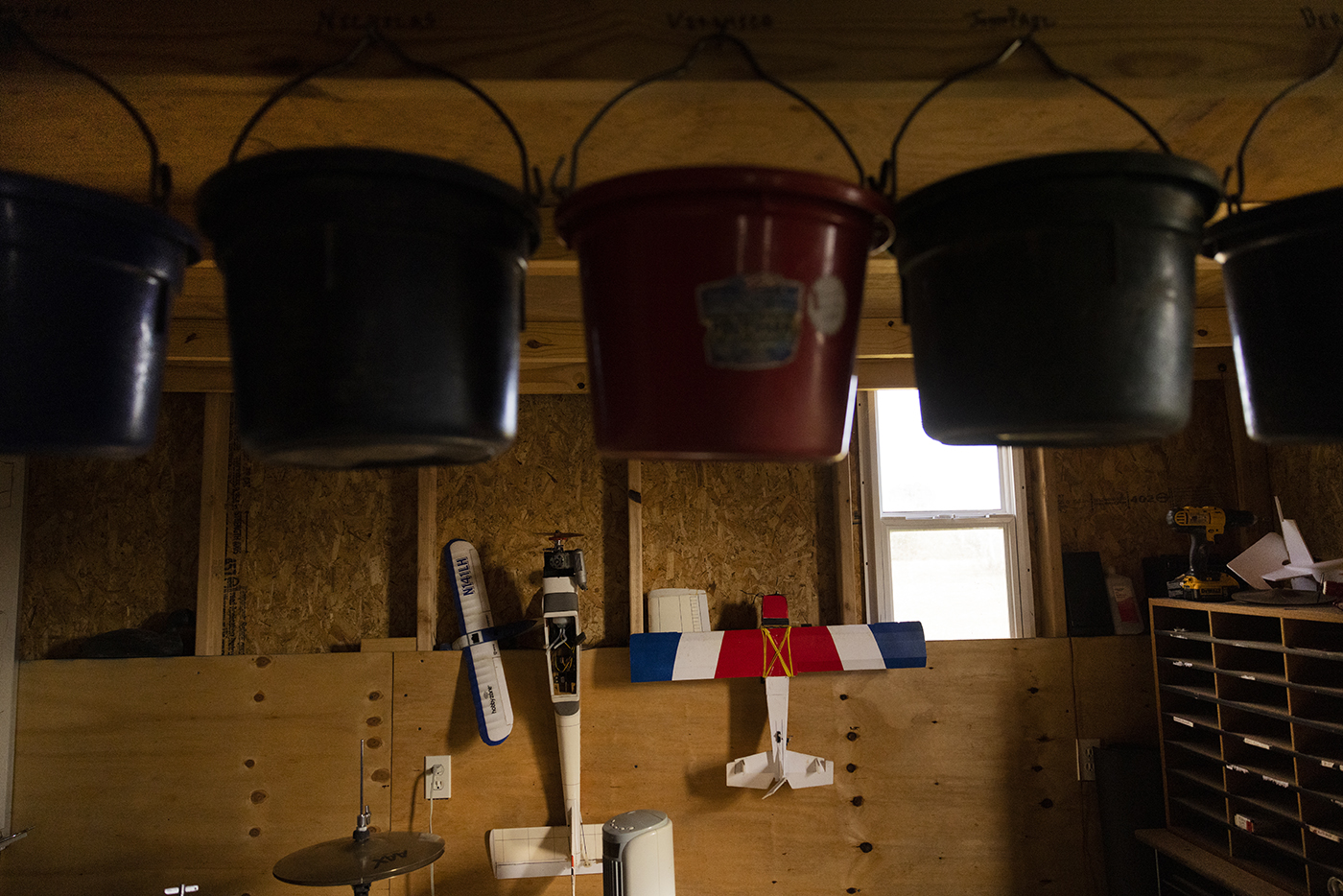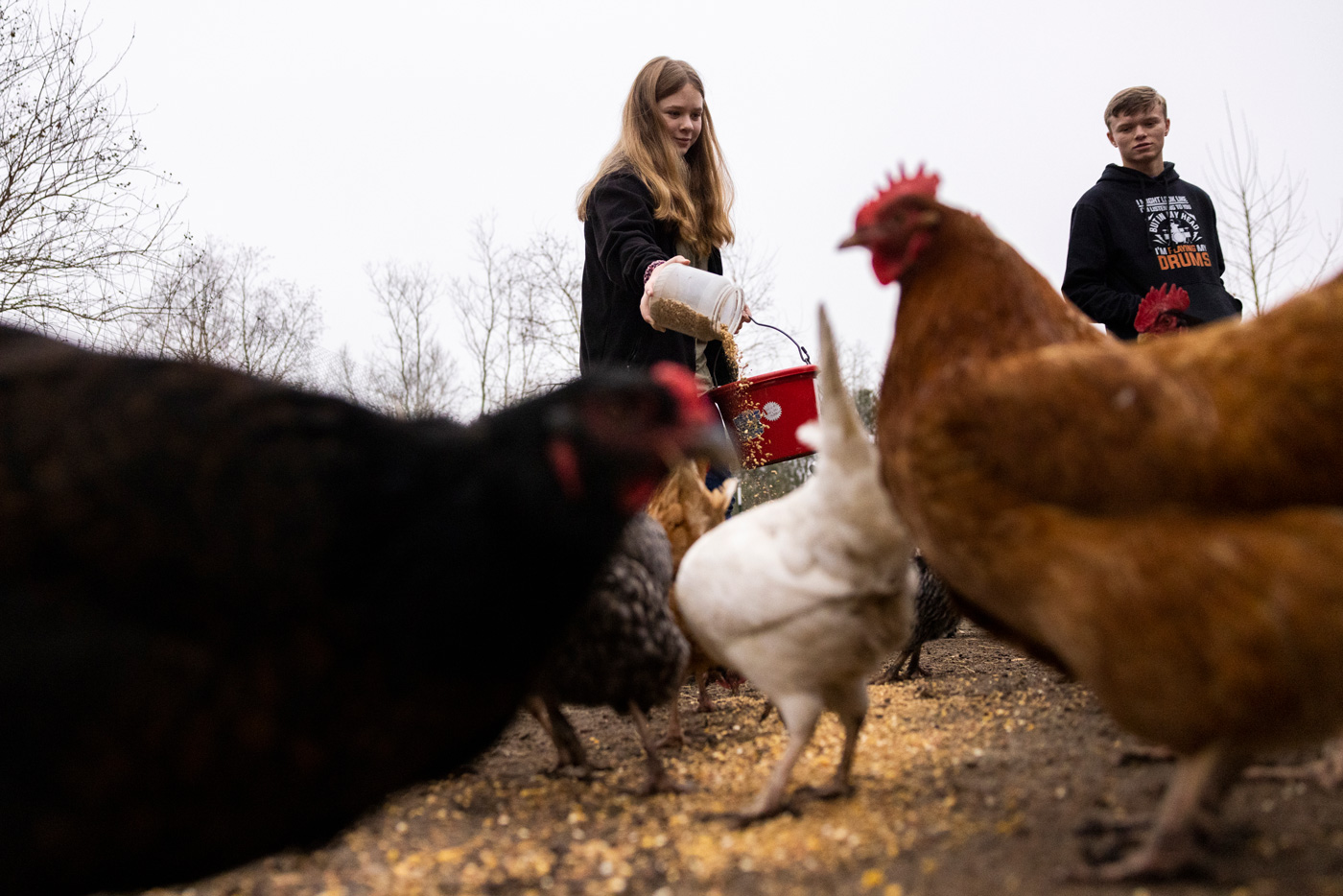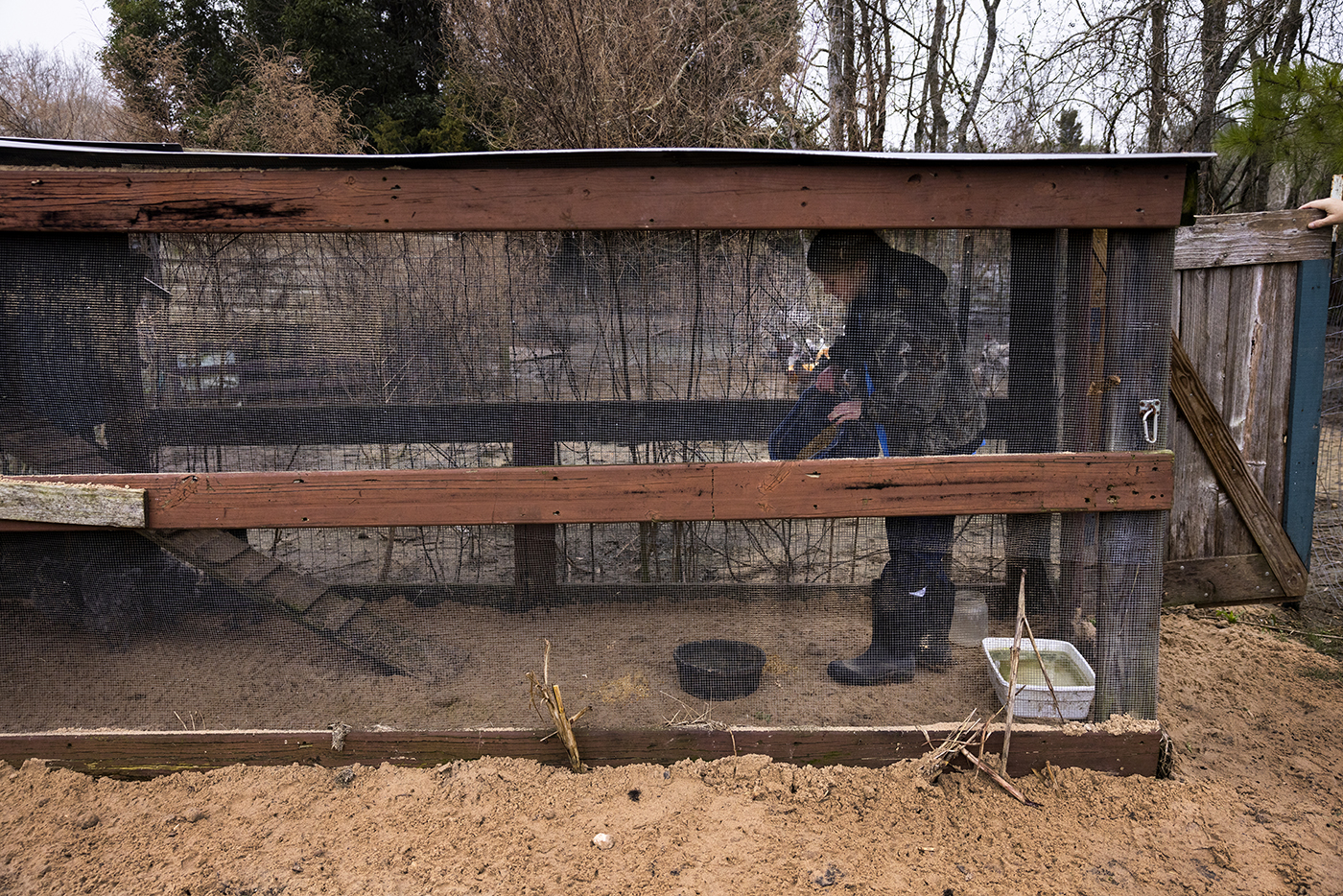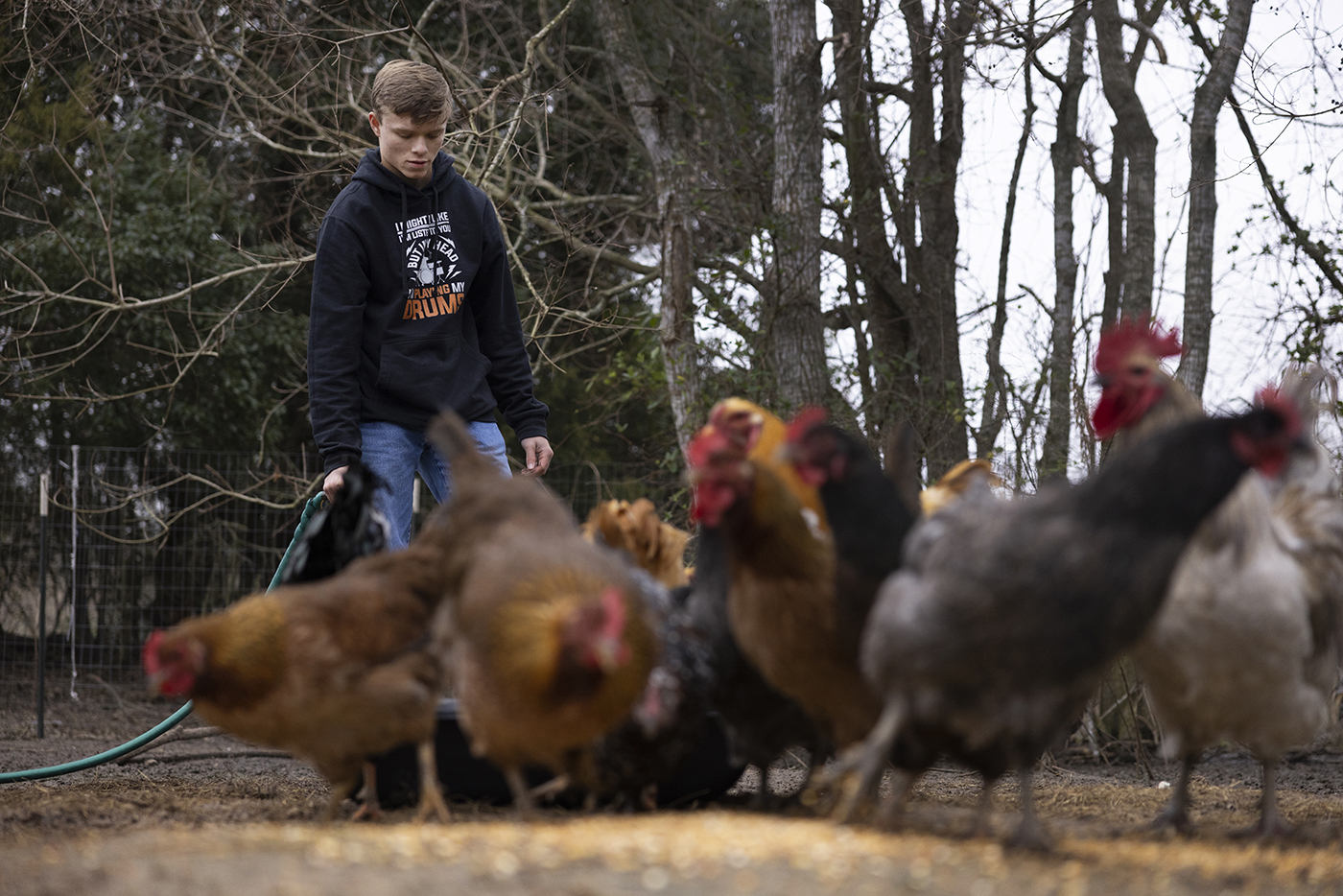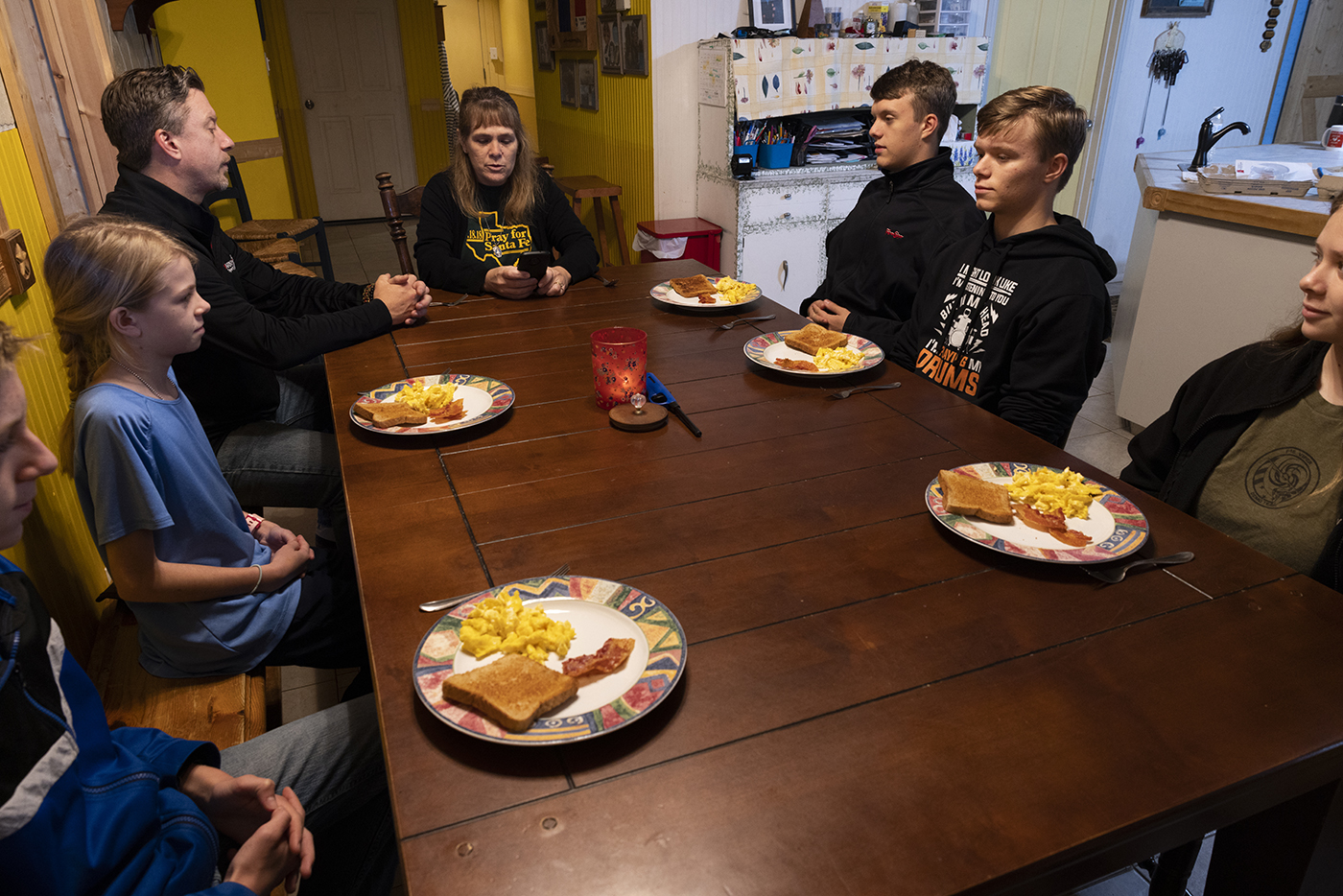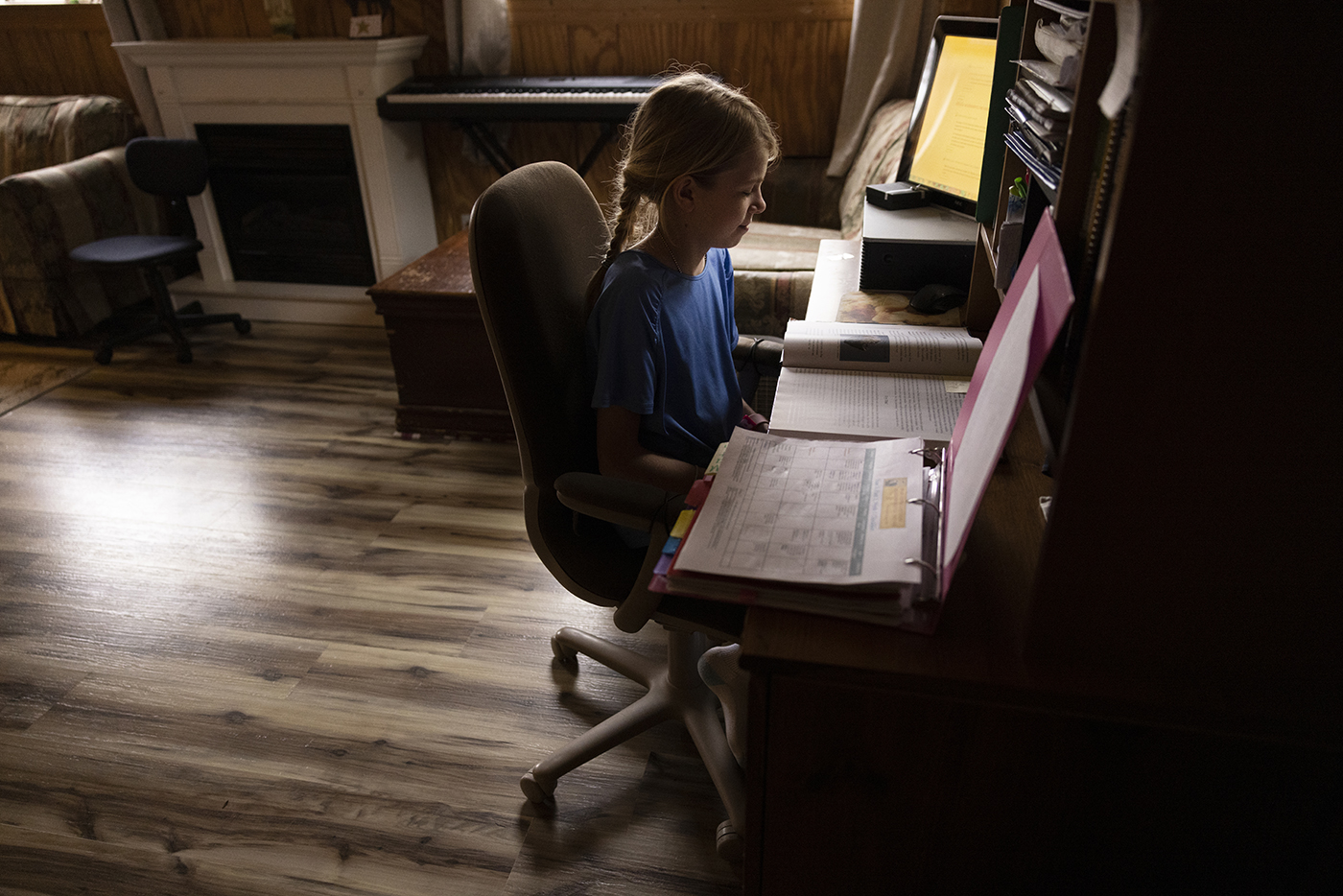|
Getting your Trinity Audio player ready...
|
SANTA FE – Bernadette Clements is what her parents call a “Chicken Whisperer.” The youngest of five siblings responsible for running Clements Family Farm in Santa Fe, 11-year-old Bernadette can nurse any chicken back to health, no matter how close it’s pecking to death’s door.
And keeping chickens alive isn’t always easy. Here in Texas, they’re constantly threatened by a host of local predators, like bobcats, hawks and owls, as well as our unpredictable and often severe weather, including hurricanes and freak freeze events.
Those isolated events can affect a farmer or a flock. But in 2022, an avian flu killed more than 50 million chickens across the U.S., jeopardizing the nation’s poultry industry, and driving up the average price of eggs 120 percent – from $1.93 in January to $4.25 in December, according to data from the U.S. Bureau of Labor Statistics.
For a peek at how this crisis affects farmers in our area, we spent an afternoon at Clements Family Farm, run by Bernadette and her older siblings, JohnPaul, who is 13; Veronica, 14; Nicholas, 16; and Dominic, 18, with the supervision of their parents Tony and Aimee.
Here, the price of eggs has continuously climbed since the Clementses first started selling a dozen for $3.50 in 2019. By last summer, the price reached $5, and by this January it increased again, to $6.
Customers often joke, “Well, you must be making a lot of money.”
They’re not.
“There’s not a lot of money in eggs,” says Tony Clements. “There just isn’t. I mean, if you’re huge, there might be. But now every time the feed goes up, obviously our price goes up – because feed is up, because diesel is up, because –” he pauses, and his eyes pop “– everything.”
When the cost of supplies needed to produce chickens or eggs increases, the natural economic response is to cut production, says David Anderson, a professor and economist for livestock and food product marketing at Texas A&M University. “And that’s what we did,” he says, adding that egg production was further slashed during early stages of the pandemic when restaurants were closed.
“Higher feed cost, the pandemic – that’s a good way to think about the context of where we are today,” Anderson says. “And then the disease hits, wipes out tons of birds and the prices skyrocket.”
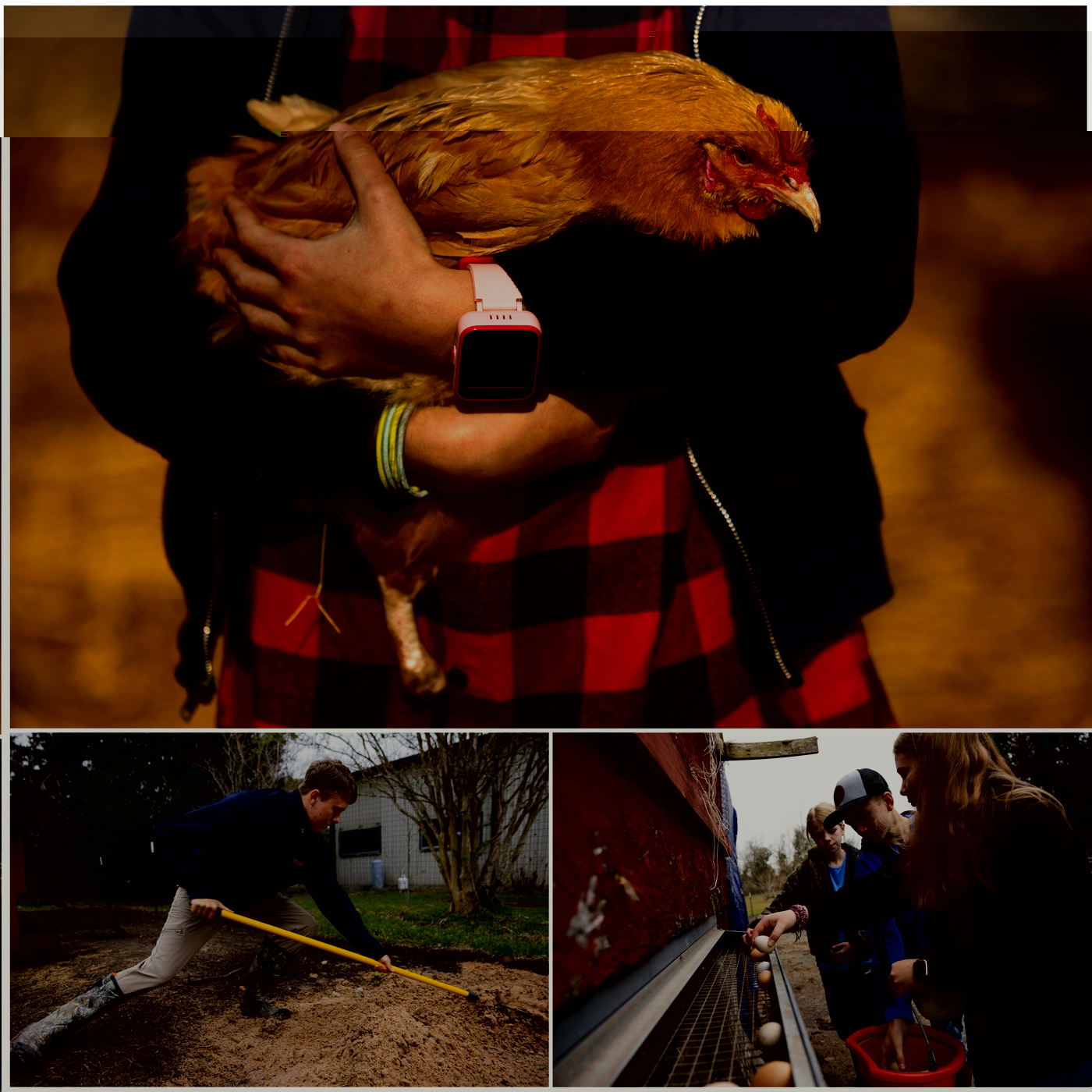
Prices versus profits
And on a family farm like the one run by the Clementses – or like the one I grew up on in upstate New York – prices and profits don’t always point in the same direction.
My mom and dad started our farm by selling hay we grew on land we owned and rented. Mom was a master at driving old Ford tractors and click-clacking the eraser end of a pencil against a calculator until the ticker-tape receipt whirring from its back end projected at least one more day of hope. Dad could bend the laws of physics to his will, driving his hay truck thousands of miles a week and fixing breakdowns with blue-collar, bubble-gum-and-duct-tape engineering. I was in preschool when they added cows to the operation, which is probably why we named our alpha heifer Gladys, like the bossiest bovine on Sesame Street. Every interaction with Gladys required just a little more time than you’d budgeted for.
None of that showed up on the accounting books. But we still had to charge more than grocery store rates for ground beef, earning me “You must be making a lot of money” comments at Friday night farmers markets where we charged $5 a pound for grass-fed ground beef. And my parents – like most U.S. farmers, including Tony Clements – eventually had to work off-farm jobs to keep the barn doors open.
“On a farm, you’re lucky if you come out even,” Tony says.
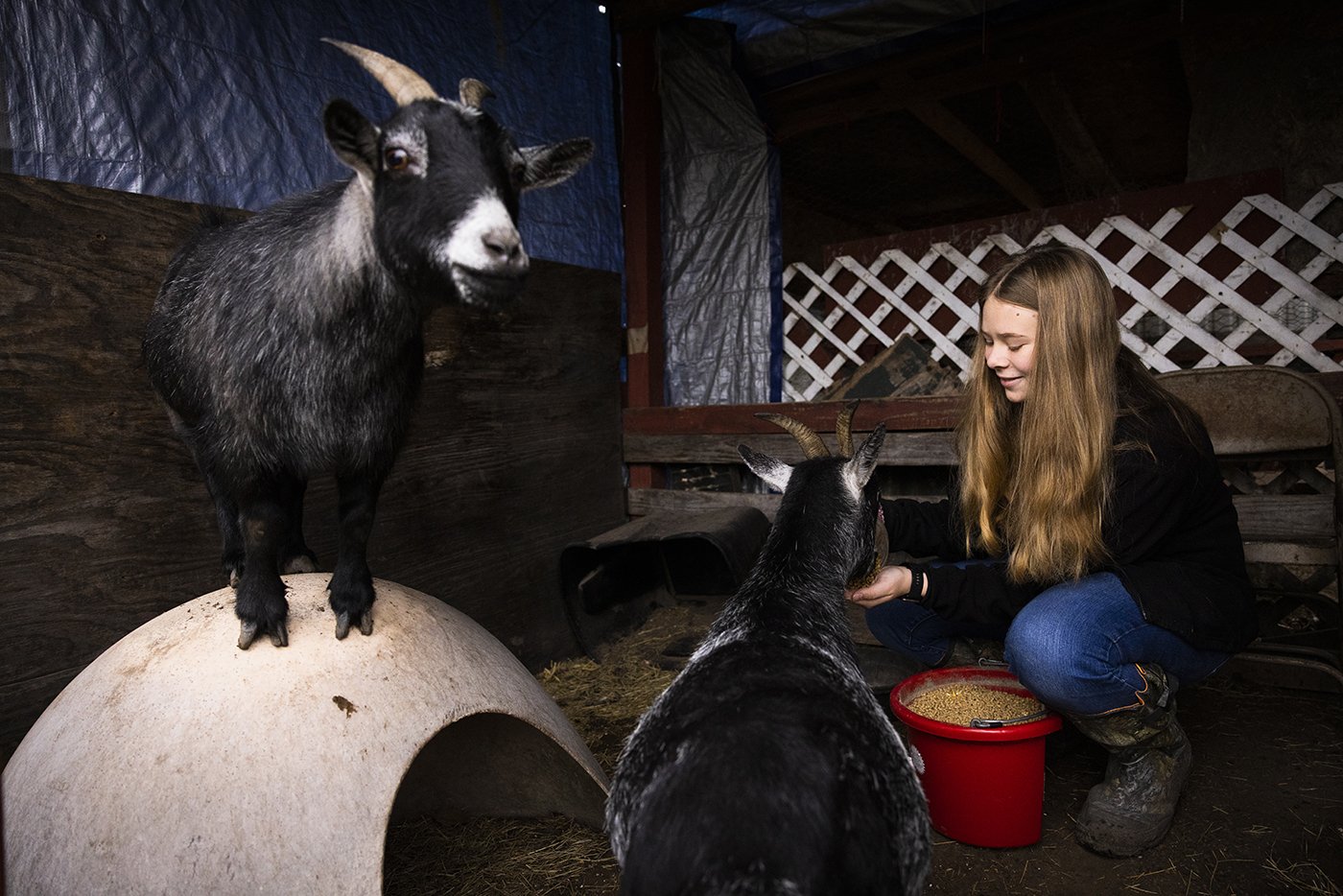
Which came first?
“The eggs were before the chickens,” Veronica offers, stoically answering an unasked, but age-old question over a discordant chorus of squawking hens who’d also like their voices to be heard, thank you very much.
The Clements kids are responsible for about 200 chickens at any given moment: Behind their house, they’ve set up coops for their egg layers, and JohnPaul keeps an incubation laboratory in the bright red shed out front; they also have chickens for sale. That part of the business is less established, but booming.
Veronica, who handles the farm’s phone, reports that she received seven calls on a recent Sunday inquiring about chickens for sale, and another eight or so the next day.
“I think the high price of eggs has made people think, ‘Why can’t I raise my own?’” says Tony.
The Clementses are happy to sell egg-laying chickens to people all over the Houston area: While they barely break even on the cost of feed with their egg sales, the margin on live hens is larger, allowing them to eke out a small profit. But the kids – and their parents – are always ready to walk any prospective chicken farmer through a crash course in the amount of sweat equity that goes into raising animals.
“People who want to have a few chickens, they’ll find out pretty fast there’s some cost involved,” Anderson says. “It ain’t cheap.”
Nor is farming predictable: When a cow busted out of a fence on a Friday afternoon in 2003, it didn’t matter that I’d just shelled out an entire week’s paycheck from my part-time job to have my hair expertly twisted and curled for that evening’s prom. I had to charge outside with our Australian shepherd, Flash Gordon, and corral the cow back to where she belonged. Flyaways be damned.
Any kid who grew up on a farm has an arsenal of stories that start, “When the weather shifted ….” the Clements kids included. Their mom, Aimee, begins a tale about a trailer full of chickens they had to rescue from her uncle’s property when he was hospitalized for COVID-19 just as a hurricane formed a couple summers ago, and the kids take turns peppering the saga with details.
The chickens were in a nice trailer, safe from the storm and predators on all sides, including the roof. But the bottom was made of wire – a soft underbelly. At some point, a predator – no one’s sure which one – figured it out. They lost a few chickens, and one of the surviving hens lost a leg.
They call her Legolas (pronounced: Leg-less) now, named after one of the kids’ favorite Lord of the Rings characters. To hear the Clementses tell the story, one thing is clear: Legolas should have died.
But they have their resident Chicken Whisperer, Bernadette. She went outside every day to sit with Legolas, picking her up and snuggling her in close to her chest. Sometimes she’d bring out a chair and school books, studying as she cradled the chicken. Other times, she’d pop the hen in her bike basket and ride around.
“We thought Legolas was going to die,” says Bernadette’s older sister, Veronica.
But she didn’t. She lays eggs for the family now. She can hop around on one leg, though Bernadette often offers her a ride in her arms. She has the distinct honor of being a little girl’s favorite chicken – and look, I’m not an expert in chicken body language, but when Bernadette is holding Legolas close to her chest, the bird looks … content.
The Clementses don’t know when the cost of feed is going to go down. They don’t know when the extended wait for newly hatched chickens to add to their flock will return to normal. They don’t know if their customers will be able to continue paying $6 a dozen, or if they’ll be able to lower their prices in a few months when economists estimate the acute pinch is over.
But they do know one thing: Right now, their little farm is worth their time – even if the value they gain isn’t always reflected in their bank accounts.
Share your Houston stories with me. We can start on Twitter, Facebook and Instagram. Or you can email me at [email protected].





